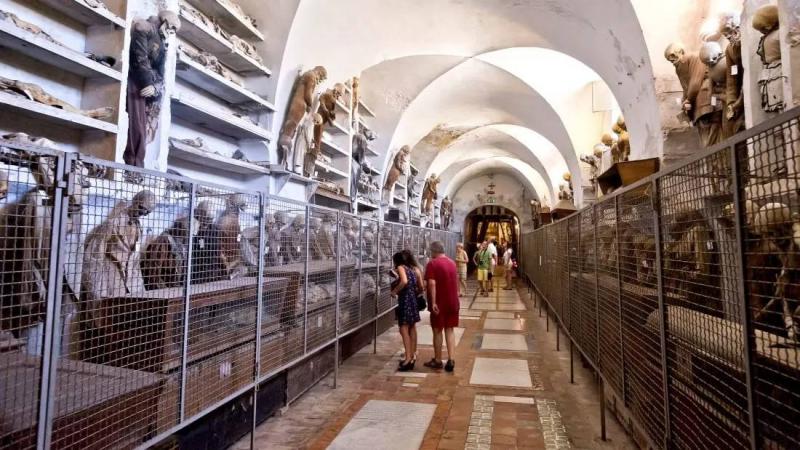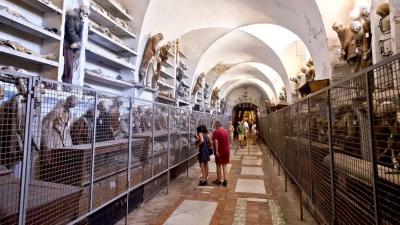A group of scientists is seeking to understand the reasons behind the mummification of dozens of children, who were then buried in catacombs under a monastery on the Italian island of Sicily. Kirsty Squires, an assistant professor of bioarchaeology at Staffordshire University in the UK, is leading the first comprehensive study of the mummified children, with fieldwork set to begin early next week.
In the catacombs of the Capuchin Monastery in Palermo, northern Sicily, which is a macabre tourist attraction, researchers will analyze the remains of 41 children buried in one of the designated children's graves, despite a total of 163 children being buried in these catacombs. Squires told CNN, "We want to understand the lives of these individuals, their health, their growth, and so on," adding, "We want to compare the biological data with many cultural aspects of the time."
Squires mentioned that the mummified children are fully clothed, with some placed in their beds, others on chairs, and some in a standing position with the help of a stick. Researchers will also analyze the significance of the artifacts used.
Information about these children, who were buried between 1787 and 1880, is scarce. They are part of a large collection of mummified remains across Europe, which includes 1,284 bodies. Squires stated, "We know they belong to middle-class families, as the mummification rituals were practiced among the wealthier classes, such as the nobility, the middle class, and the clergy." She clarified, "We know they do not belong to the poorest class of society, but that's all we know so far." She added, "But why were they not buried like others?"
A press release from Staffordshire University indicated that the team will use X-ray technology, which is a non-invasive method from an ethical standpoint, unlike dissecting human remains. Squires said, "We are using a portable X-ray machine to take radiographs that will help us estimate the ages of the children based on their teeth and bone growth," noting that she will look for indicators of disease.
The researchers will conduct a total of 574 X-rays, or 14 images for each mummy, to include the data in the children's biological profile and determine if the mummification included specific ages or genders. According to the project's website, this data will be used to uncover the presence of growth defects, stress indicators, and pathological lesions in order to understand the health status and lifestyle experiences of the children at that time.
According to Squires, the practice of mummification in the catacombs dates back to 1599 and continued until the early 20th century. The middle class viewed this ritual as "a way to keep the social person alive after death," with families frequently visiting the remains of their buried relatives.
Squires is joined in these catacombs by researcher Dario Piombino-Mascali from Vilnius University in Lithuania, along with two radiographers and an artist, who will spend a week investigating the records of the deceased. The results of this research are expected to take several months before publication.




